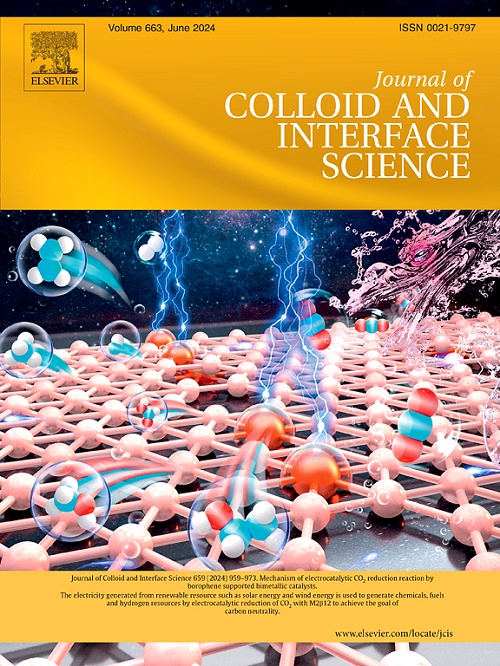Ternary composite of unzipped multiwalled carbon nanotubes (curved graphenes) for next-generation capatteries
IF 9.4
1区 化学
Q1 CHEMISTRY, PHYSICAL
引用次数: 0
Abstract
Polyaniline (PANI) and Nickel ferrite (NiFe2O4) based hybrid materials have garnered significant interest in energy storage applications because of their exceptional electrical conductivity, redox properties, and structural stability. In this study, a hybrid ternary composite combining UzMWCNT with NiFe2O4 and PANI (UzMWCNT/NiFe2O4/PANI) is successfully synthesized using a two-step synthesis method involving hydrothermal and in-situ polymerization, as an efficient electrode material for supercapacitor application. The crystalline structure, functional groups, and surface morphology of the synthesized composite materials were analyzed through X-ray diffraction studies (XRD), Raman spectroscopy, scanning electron microscopy (SEM), transmission electron microscopy (TEM) and X-ray photoelectron spectroscopy (XPS). The electrochemical performance was evaluated utilizing cyclic voltammetry (CV), galvanostatic charge–discharge (GCD), and electrochemical impedance spectroscopy (EIS). The interaction between the various components and the unique composition structure yields a specific capacitance of 1022 F g−1 at 1 A g−1, with a capacitance retention of 84 % after 2000 GCD cycles. The synthesized ternary hybrid composite maximizes the accessibility of multiple active sites while reinforcing structural stability, enhancing its energy storage performance. The research unveils the compelling advantages of the UzMWCNT/NiFe2O4/PANI ternary composite, positioning it as a cutting-edge candidate for next-generation energy storage devices.

用于新一代电池的无拉链多壁碳纳米管(弯曲石墨烯)三元复合材料
聚苯胺(PANI)和镍铁氧体(NiFe2O4)基杂化材料因其优异的导电性、氧化还原性能和结构稳定性而在储能应用中引起了极大的兴趣。本研究采用水热原位聚合两步法成功合成了UzMWCNT与NiFe2O4和PANI的杂化三元复合材料(UzMWCNT/NiFe2O4/PANI),作为一种高效的超级电容器电极材料。通过x射线衍射(XRD)、拉曼光谱(Raman spectroscopy)、扫描电子显微镜(SEM)、透射电子显微镜(TEM)和x射线光电子能谱(XPS)分析合成的复合材料的晶体结构、官能团和表面形貌。利用循环伏安法(CV)、恒流充放电法(GCD)和电化学阻抗谱法(EIS)对其电化学性能进行了评价。不同组分之间的相互作用和独特的组成结构在1ag−1时产生1022fg−1的比电容,在2000 GCD循环后电容保持率为84%。合成的三元杂化复合材料在增强结构稳定性的同时,最大限度地提高了多个活性位点的可达性,提高了其储能性能。该研究揭示了UzMWCNT/NiFe2O4/PANI三元复合材料的引人注目的优势,将其定位为下一代储能设备的前沿候选材料。
本文章由计算机程序翻译,如有差异,请以英文原文为准。
求助全文
约1分钟内获得全文
求助全文
来源期刊
CiteScore
16.10
自引率
7.10%
发文量
2568
审稿时长
2 months
期刊介绍:
The Journal of Colloid and Interface Science publishes original research findings on the fundamental principles of colloid and interface science, as well as innovative applications in various fields. The criteria for publication include impact, quality, novelty, and originality.
Emphasis:
The journal emphasizes fundamental scientific innovation within the following categories:
A.Colloidal Materials and Nanomaterials
B.Soft Colloidal and Self-Assembly Systems
C.Adsorption, Catalysis, and Electrochemistry
D.Interfacial Processes, Capillarity, and Wetting
E.Biomaterials and Nanomedicine
F.Energy Conversion and Storage, and Environmental Technologies

 求助内容:
求助内容: 应助结果提醒方式:
应助结果提醒方式:


